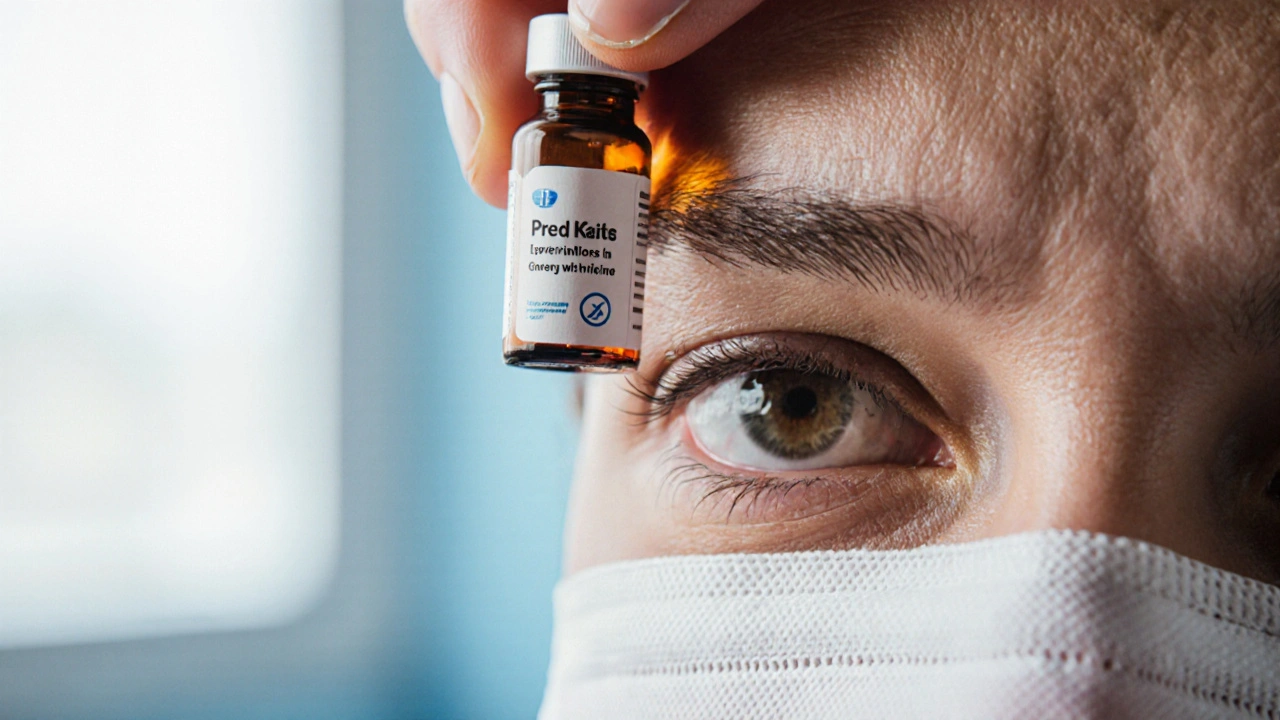Eye Drop Comparison: Choose the Right Ophthalmic Solution
When working with Eye Drop Comparison, a systematic look at different ophthalmic drops to help you pick the right one for your vision health. Also known as eye drop guide, it provides the context you need to make an informed choice.
One of the first decisions is whether you need Artificial Tears, lubricating eye drops that mimic natural tears and relieve dryness. These drops are the go‑to for dry‑eye sufferers, contact‑lens wearers, and anyone spending long hours in front of a screen. They differ in viscosity, preservative content, and added electrolytes, which can affect comfort and how often you need to reapply.
If inflammation is the main problem, Steroid Eye Drops, prescription drops that reduce swelling and prevent scarring in the eye become relevant. Steroid drops are powerful but carry risks like raised intra‑ocular pressure and cataract formation, so understanding dosage, treatment duration, and monitoring requirements is crucial before you start.
For allergies, Antihistamine Eye Drops, drops that block histamine receptors to relieve itching, redness, and watery eyes are the preferred choice. These can be sold over‑the‑counter or as prescription combos with a mild steroid for tougher cases. Knowing the onset time and how long relief lasts helps you pick a product that fits your daily routine.
Key Factors to Compare
When you start a eye drop comparison you’ll quickly see that four main attributes drive the decision: active ingredient, preservative status, dosage frequency, and side‑effect profile. Active ingredient determines the therapeutic goal—whether it’s lubrication, anti‑inflammation, or anti‑allergy. Preservative‑free formulations are essential for people with sensitive eyes or chronic conditions, as they reduce the chance of irritation over long‑term use.
Dosage frequency ties directly to lifestyle. A drop that lasts 12 hours means fewer interruptions, while a thin‑film artificial tear might need reapplication every two hours during screen time. Side‑effects range from mild stinging to serious issues like increased eye pressure, especially with steroid drops. Checking the safety data sheet for each product saves you from unpleasant surprises.
Another layer of comparison involves packaging. Single‑use vials eliminate contamination risk but can be pricier, whereas multi‑dose bottles are convenient for regular users but require strict hygiene. Some brands offer “no‑preservative” multi‑dose technology, blending the best of both worlds.
Cost is a practical factor you can’t ignore. Generic versions of steroid or antihistamine drops often match brand‑name efficacy at a fraction of the price. However, the cheapest artificial tears might lack the electrolytes that keep the tear film stable, leading to short‑lived relief. Balancing price with performance is where a solid eye drop comparison really shines.
Clinical guidelines also shape the landscape. For example, the American Academy of Ophthalmology recommends preservative‑free artificial tears for severe dry‑eye disease, while steroid drops are reserved for post‑surgical inflammation or uveitis under close supervision. Aligning your choice with these guidelines ensures you’re following proven best practices.
Real‑world user experiences add another data point. Online reviews often highlight the “burn” sensation of certain antihistamine drops or praise the long‑lasting effect of high‑viscosity artificial tears. While anecdotal, these insights can tip the scale when two products have similar clinical profiles.
Regulatory status matters, too. Over‑the‑counter artificial tears and antihistamine drops must meet FDA OTC monographs, guaranteeing a baseline safety standard. Prescription steroid drops undergo a stricter review, meaning they’re backed by more extensive clinical trials but also come with tighter prescribing rules.
Lastly, consider the condition you’re treating. Dry‑eye disease, allergic conjunctivitis, postoperative inflammation, and corneal ulcers each demand a different therapeutic approach. Mapping your symptom profile to the right eye‑drop category is the keystone of an effective comparison.
Putting all these pieces together, you can now navigate the sea of options with confidence. Below you’ll find a curated collection of articles that dive deeper into each eye‑drop type, compare leading brands, and offer step‑by‑step guides on how to choose and use them safely. Whether you’re a first‑time user or a seasoned eye‑care pro, the resources ahead will help you zero in on the perfect solution for your eyes.
Pred Forte vs Other Steroid Eye Drops: A Complete Comparison
Compare Pred Forte with top steroid eye‑drop alternatives, covering potency, side‑effects, cost, and when each is best suited for ocular inflammation.
